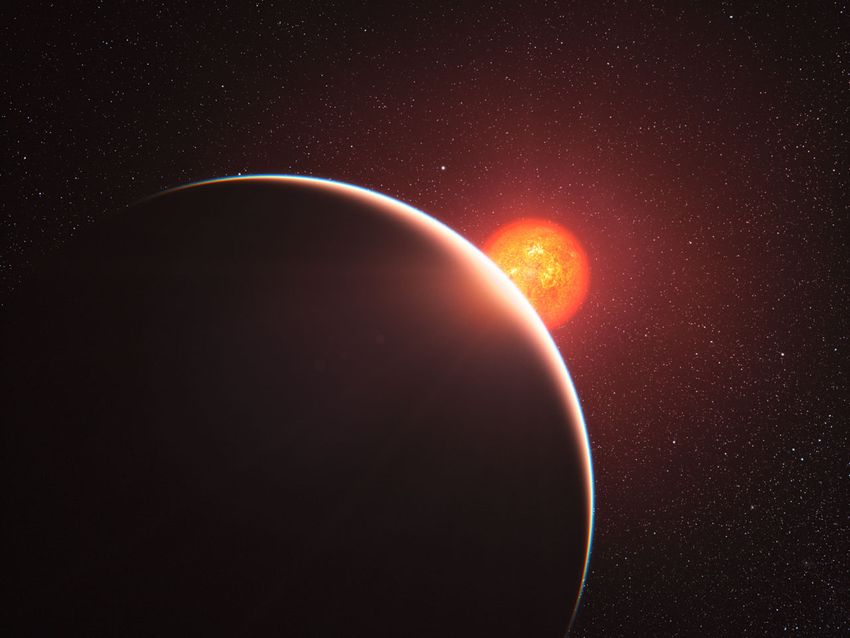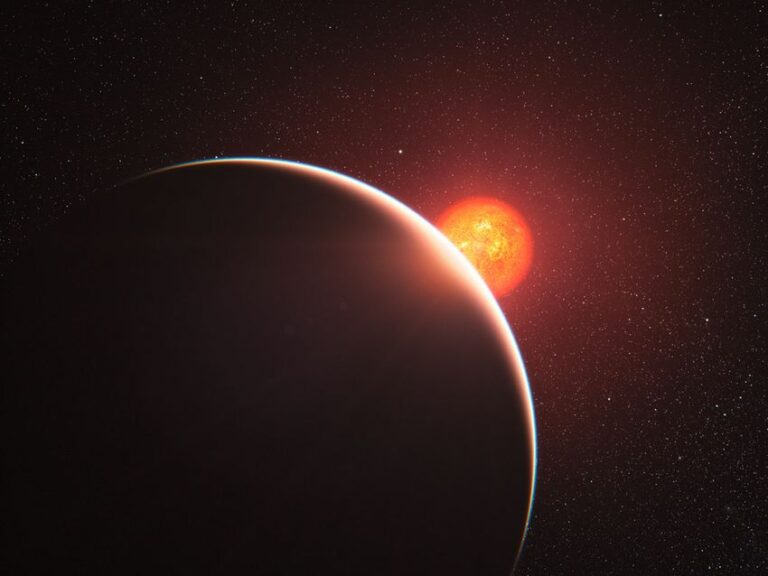Metal-Rich Atmosphere Possibly Detected in Exoplanet
Upon initial examination, GJ 1214b appears to be just another member of the super-Earth category of exoplanets that is steadily growing in number. Discovered in 2009 by the MEarth Project, this planet orbits an M dwarf star in the constellation Ophiuchus in a tightly bound orbit, completing one revolution every 1.6 days. In recent times, GJ 1214b made history as the first super-Earth to have a portion of its atmosphere detected. Astronomers compared its spectra to models and found a significant presence of water vapor, indicating broad agreement. The same team has now conducted further research to refine the potential characteristics of the planet’s atmosphere.
Previously, the team proposed two hypothetical models that could potentially explain their observations. The first model suggested that the planet could be enveloped in hydrogen and helium, but the absence of absorption features in the atmosphere’s spectra indicated otherwise, unless this layer was concealed by dense clouds. However, based on the available data, they were unable to definitively rule out this possibility.

By combining their previous observations with more recent data from the MEarth Observatory, the team now asserts that they have successfully eliminated this scenario with a confidence level of 4.5 σ (over 99.99%). Consequently, the remaining model, which incorporates higher concentrations of “metals” (a term used in astronomy to refer to elements with atomic numbers greater than helium), gains support. The team also maintains their earlier conclusion that the atmosphere is likely to contain at least 10% water vapor by volume, stating this with a confidence level of 3 σ (or 99.7%) based on the new observations. Despite the presence of water vapor, it is important to note that the close proximity of the planet to its star would result in scorching temperatures of 535 degrees Fahrenheit, making it far from an inviting environment for a tropical jungle.
The prevalence of heavy elements in the atmosphere provides valuable insights into the structure and history of the planet itself. According to models of planetary atmosphere, there are two main formation scenarios for planets like GJ 1214b, which have a similar mass and temperature. The first scenario suggests that the atmosphere is directly acquired during the planet’s formation. However, this possibility has been ruled out as it would result in a hydrogen-rich atmosphere. The second scenario proposes that the planet initially formed as an icy body beyond the “snow line” and later migrated inward, leading to the creation of the atmosphere through the sublimation of ices.
In addition to their atmospheric research, the team also analyzed the timing of the transits to investigate any orbital wobbles that could indicate the presence of other planets in the system. However, no additional planets were discovered.
This article is republished from PhysORG under a Creative Commons license. Read the original article.
Do not forget to share your opinion with us to provide you with the best posts !




0 Comments